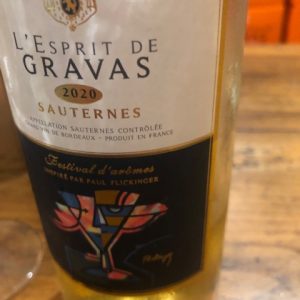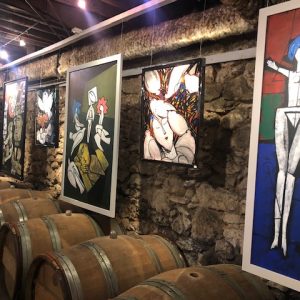A walk on the sweet side in Sauternes
Sauternes is one of my very favourite French wines. I was always led to believe that this sweet wine was a dessert wine.
But on my visit to Château Gravas today, I was informed that this delicious wine should be enjoyed earlier in a meal, long before your palate might be tiring out. Sauternes is excellent as a pre-meal aperitif, or with foie gras as an entree, or with a rich chicken dish, or with the Roquefort blue cheese.
If you must have Sauternes with your dessert, a not-too-sweet dessert like apple pie is a good match. If you are planning to have a chocolate mousse for dessert, please be sensible and pair it with a rich red wine (sometimes known as a BBR — big ballsy red).
Château Gravas is actually in Barsac, a town that lies within Sauternes and is entitled to use either name. Sauternes is part of the Graves area, southeast of Bordeaux. Its wine is typically made from a blend (or “assemblage” in French) of sémillon, sauvignon blanc, and muscadelle grapes. Château Gravas is rather unique in that it is only made from sémillon.
As is widely documented, Sauternes’ unique flavour comes from Botrytis cinerea, also known as noble rot. It causes the grapes to become partially raisined, resulting in concentrated and distinctively flavored wines.
Sauternes is a very challenging wine to make. The grapes are picked very late to ensure the development of rich sweet and fruity flavours. The Botrytis cinerea means that grapes must be picked one-by-one.
Château Gravas has been going through particularly difficult times. Its wine crops were so damaged by hail in 2020 and frost in 2021 that they were unable to make the premium Sauternes in those years. A super careful and cautious approach is hoped to enable production this year (2022).
I tasted two excellent wines. L’Esprit de Gravas 2020 is a second tier wine that is drinking beautifully now. While the Château Gravas Sauternes is wonderfully rich, with complex fruit flavours, and will clearly age nicely for many years.




